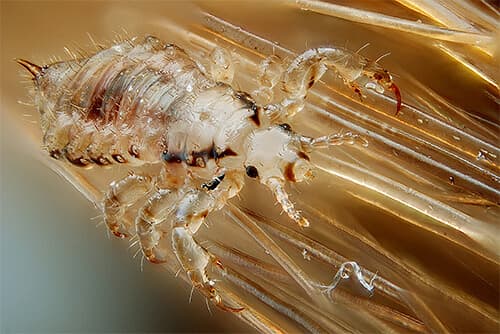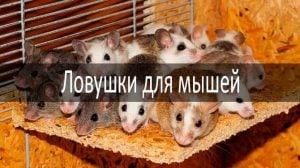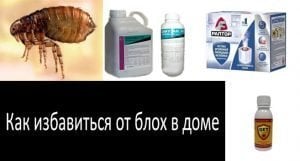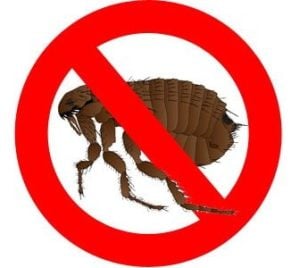Lice are one of the most annoying insect pests. Other blood-sucking parasites, like bed bugs, mosquitoes, fleas, bite and disappear … But head lice will firmly settle in your hair and will live there and harass you until you get rid of them: lice eggs (nits) will sit firmly in hair roots, and adults actively crawl through the hair. Do not waste time on empty expectations from unverified funds!
In this article, we will give a 5-step instruction on how to get rid of head lice, and tell you about who lice are, why they are dangerous to humans, and how infection occurs. We will also answer the most popular questions about lice: do they jump, do they live in furniture or a school bus, why do they “like” straight long hair more, how are they transmitted, is it possible to catch lice during a selfie, and is it enough just to wash your hair so as not to get infected? All useful and important information has been collected here to help you get rid of lice quickly and effectively and never get infected again. After all, even a couple of uncombed eggs in the head can again create a colony of bloodsucking lice.
12 most important questions about lice
Head lice are blood-sucking parasites, one of two forms of a species of lice common only to humans. They are small and flat, about 3 mm long – about the size of a sesame seed. Their color varies from off-white to grey-black. Adult lice have 3 pairs of tenacious legs to firmly grab the hair and not fall off the head. The eggs of lice, which are called nits, are white and are attached to the hair by a special “glue” – a sticky substance that the female secretes. Lice prefer to hide in hidden places, such as the back of the head and the area behind the ears.
These are the basic facts about lice that everyone knows – but the behavior of lice and harm to humans are surrounded by many myths that need to be dispelled. We will answer the most frequent and important questions related to the behavior of these parasites. Before you start fighting such an unpleasant enemy, you need to know everything about him!
How do lice live and how quickly do they reproduce?
The louse transformation cycle is about 3 weeks: it begins with eggs that the female lays on the scalp, clinging to the glue to the base of the hair so tightly that they cannot be washed off with water. After 8-9 days, the larvae will hatch; they will need about 3 servings of blood and 10 days to change their skin and eventually become an adult insect. Since they are always on the “source of food”, they do not have developmental delays. As adults, lice immediately begin to multiply. Adults live 30 to 40 days and need 5 blood supplies per day to lay 6-8 eggs per day.
Do lice jump or fly?
No, lice do not jump or fly. Unlike fleas, their tenacious paws are designed only to hold tightly to human hair, but they are not suitable for jumping. In addition, lice have a fairly massive body and no wings. All this would make them extremely vulnerable parasites … if they did not know how to crawl. They do it masterfully quickly and deftly: they need only a few seconds to get over someone’s head.
Is it true that head lice can get “dirty” if you don’t wash for a long time?

No: contrary to popular belief, these parasites do not infect a person spontaneously, that is, from dirt, they can only be transmitted from another infected person. But on the other hand, there are other types of human lice that are more capricious and start just because of poor personal hygiene – these are body lice – and a rare change of underwear.
Can lice that have left the head breed again?
No, lice do not live long after they are removed from the head! The eggs need constant contact with a warm human head and die within hours of being removed. Larvae and adults need blood for timely molting, maintenance of life and reproduction – therefore they will also die a maximum of 2 days after removal. So do not rush to extremes in your fears: lice can only survive on the head of the owner. They do not crawl on carpets, furniture or vehicles (like a bus) in search of a new owner, but simply die after leaving their heads.
How are lice infested?
There are several options for transmitting lice:
- Adult lice usually simply crawl from an infected person’s hair to another head – transmitted through head-to-head contact. A louse can crawl unnoticed even during a short kiss or hug with a person “carrier” of lice.
- Lice eggs are rare, but can be transmitted through shared household and hygiene items: combs, rubber bands, towels, pillowcases
- Eggs can be in the folds of clothing. Do not wear someone else’s clothes and hats, this can result in infection!
You can get infected from any patient, but the more infected lice, the more dangerous contact with him. People are most contagious when they have adult head lice. newborn larvae do not leave the “carrier territory”. Try to stay away from such people if you were forced to be in the same room with him and noticed that someone was crawling in their hair.
Can you get head lice while taking a selfie?

Yes, there is such a danger, because people are usually “head-to-head” during selfies – and this is the ideal way for the “journey” of lice. These parasites only need a few seconds to cover the small distance between the heads of two people. Therefore, it is better not to take pictures with just anyone!
Can you get head lice at home?
Yes this is true. The most common places where adults can pick up lice are at home and in public places. And home lice are usually brought by small children from kindergartens and less often from school or brought from a summer camp. Therefore, it is believed that lovers, families, and even neighbors and hostel residents are at particular risk, as they spend enough time together, being at a close distance from each other.
Is it possible to get infected in transport, cinema or at work?
As for public places, you can also get infected in transport, in sports, as well as in the theater and other places where strangers (unfamiliar) people are forced to be nearby.
In a special risk zone are also police officers, doctors, social workers and other people who, on duty, are forced to contact a large number of strangers. How can they protect themselves? For example, use tea tree oil as a lice repellant.
Is it true that only children have lice?
No, that’s not entirely true. Head lice are indeed common in children between the ages of 3 and 12, as they usually spend a lot of time together in groups. And it doesn’t cost anything for lice to crawl from one head to another. In kindergarten, children play together and sleep in adjacent beds – therefore, if one child has lice, it is almost 100% that everyone will soon have them. In addition, young children often do not look for the cause of itching in the head and do not complain about it, but simply comb their head. Therefore, schools and kindergartens should conduct periodic medical examinations of children for head lice. But adults can also become infected: absolutely no one is insured.
Is it true that lice are more common in people with straight long hair?
Yes, this is partly influenced by hygiene, type and length of hair. But, as we said above, lice do not start from dirt – the level of hygiene in this case affects in a completely unexpected way. Lice are not selective and can appear on anyone, but it is believed that they would rather prefer clean (!), Long and straight hair, from the roots of which fat, dust and skin flakes are washed away – this way it is easier to cling to them.
Why straight lines? Different hair (straight, curly or strongly curly) has a different cross-section and the number of hair shafts. So, straight hair has a round section and 1 rod – it is convenient for lice to grab onto them. According to studies, African Americans rarely get lice because they have very curly hair.
Why long? Often they are simply loose, and not tucked into the hair – it is easy for lice to climb them and settle at the roots. In addition, there is an opinion that nervous people are more likely to suffer from lice: supposedly they are more worried, sweat, and this attracts lice.
Is it possible to visually determine how long ago the infection occurred?

Almost impossible. If you realized it and saw a lot of lice on your head, then it is obvious that you have long been their carrier. As a reminder, it only takes about 3 weeks for a generation of lice to become adults and start producing the next offspring. Also keep in mind that nits are usually white, but when they get close to hatching, they turn brown. This color means that the larvae are already sitting inside, ready to hatch.
Is it possible to get lice from pets – cats and dogs?
No: pets have their own types of lice, but they are purely species-specific and cannot be transmitted to humans or animals of other species. So, for example, cat lice will not feed on the blood of a person, dog, or other creature. Head lice of a person also can not anyone, except for other people and some species of monkeys very close to him.
Why are lice dangerous to humans?
Head lice are not known to transmit any infectious disease from person to person – a fact proven by American scientists.
But no one canceled pediculosis. This is a classic disease, which is not something infectious transmitted from lice, but the very fact of the presence and activity of lice. The disease affects the skin, hair and leads to severe itching, scratching of the scalp, a terrible appearance – and the fact that the person becomes a carrier and can infect others.
The horror of pediculosis is that it appears only 2-3 weeks after infection. You can have lice on your head and not know about it, since the pests have not yet begun to torment you. In addition to pediculosis, there is another threat that lice bring. This is a secondary bacterial infection that people introduce themselves by scratching deep scratches on their heads. There is also a relationship between the bites of these bloodsuckers and an increase in cervical lymph nodes.
According to experts, head lice never go away just like a cold or a migraine. Lice will gnaw on your head until you decide to get rid of them. Every month there will be more and more pests on the head, and with them you will see more and more noticeable signs of invasion – scratches on the head, neck and around the ears.
How to get rid of lice in 5 steps?
Knowing the mechanisms of the appearance and reproduction of lice, it becomes clear: it is dangerous to get rid of them “somehow” or not completely. Even a couple of eggs left in the head can re-create a colony of blood-sucking lice. But you do not need to shave your head, especially if the hair is long. This is too radical a solution to the problem, and it is suitable only for brutal men or very young children. There is no need to sacrifice hair – in the matter of eliminating lice, it is quite important to be consistent and patient and use the right means. We present you our step by step guide.
Step 1: Examine the head
Infestation in this case is the presence of live adult lice, young larvae and / or white (brown) eggs. Look for all possible signs of head lice by examining all areas of the scalp. Pay special attention to the back of the head and the area behind the ears. Not only the sick person is subject to examination, but also those who are in close contact with him. Therefore, to remain silent about lice is a very bad option! If you or your child has lice, it’s not your fault, so it’s best to let those around you know.

Step 2: Prepare tools: What do you need to get rid of lice?
To get rid of head lice, you will need a pediculicide shampoo, a special comb for combing eggs and adult lice, and oil (tea tree, olive) to make combing easier. Simply washing your hair with regular shampoo will not solve the problem – so you just waste your time! Lice sit too tightly in the hair! It is better to use these products in combination with each other to ensure that you get rid of all stages of lice – adults, larvae and eggs.
In addition to the basic products, you may also need auxiliary tools: nail scissors, cloth, a bowl of water, a magnifying glass and a regular comb.
Step 3: Shampoo
Pediculicidal shampoo is the first step in head lice treatment. It is on the effectiveness of the shampoo that the disposal of adult lice largely depends (eggs, to a lesser extent). This raises the question of active substances with proven pediculicidal action. What to look for in a shampoo? Pyrmethrin and pyrethrin are the most active and effective pediculicides.
Step 4: Combing out the nits with a comb
As we said above, the shampoo will not get rid of all the eggs – some of them will still survive and become larvae. Therefore, in addition to re-shampooing, you need to use a mechanical method – comb out all the hair, strand by strand, with a special metal comb with frequent fine teeth – simple or electronic. But after the procedure, do not relax: to achieve the effect, you need to repeat the procedure every day for all sick people for at least a week to make sure that you don’t miss a single egg.
Step 5: Cleaning and Laundry
The two most important measures in the fight against head lice are shampooing and combing. Since lice do not live long after being removed from the head, cleaning the house will not affect the development of head lice in any way. It is needed more for maintaining hygiene (removing feces of lice and dead nits) and your own peace of mind. It includes washing and vacuuming:
- Wash in hot water (at least 60°C) bed linen, towels and clothes of the infected person. Also pay special attention to hats and outerwear. Even better – after washing, dry all things in a hot dryer, and then iron them with a hot iron. If things cannot be washed at home, take them to a dry cleaner.
- Vacuum your bed, upholstery, and carpets that may have stuck-on nit hair. Don’t forget about any items that may have come into contact with your head, such as car seats.
Avoid fanaticism: the above cleaning measures will be enough to live comfortably in your home after recovery. You do not need to douse furniture and household items with insecticides, it is better to spend more time brushing your hair daily.
{code 1163}





